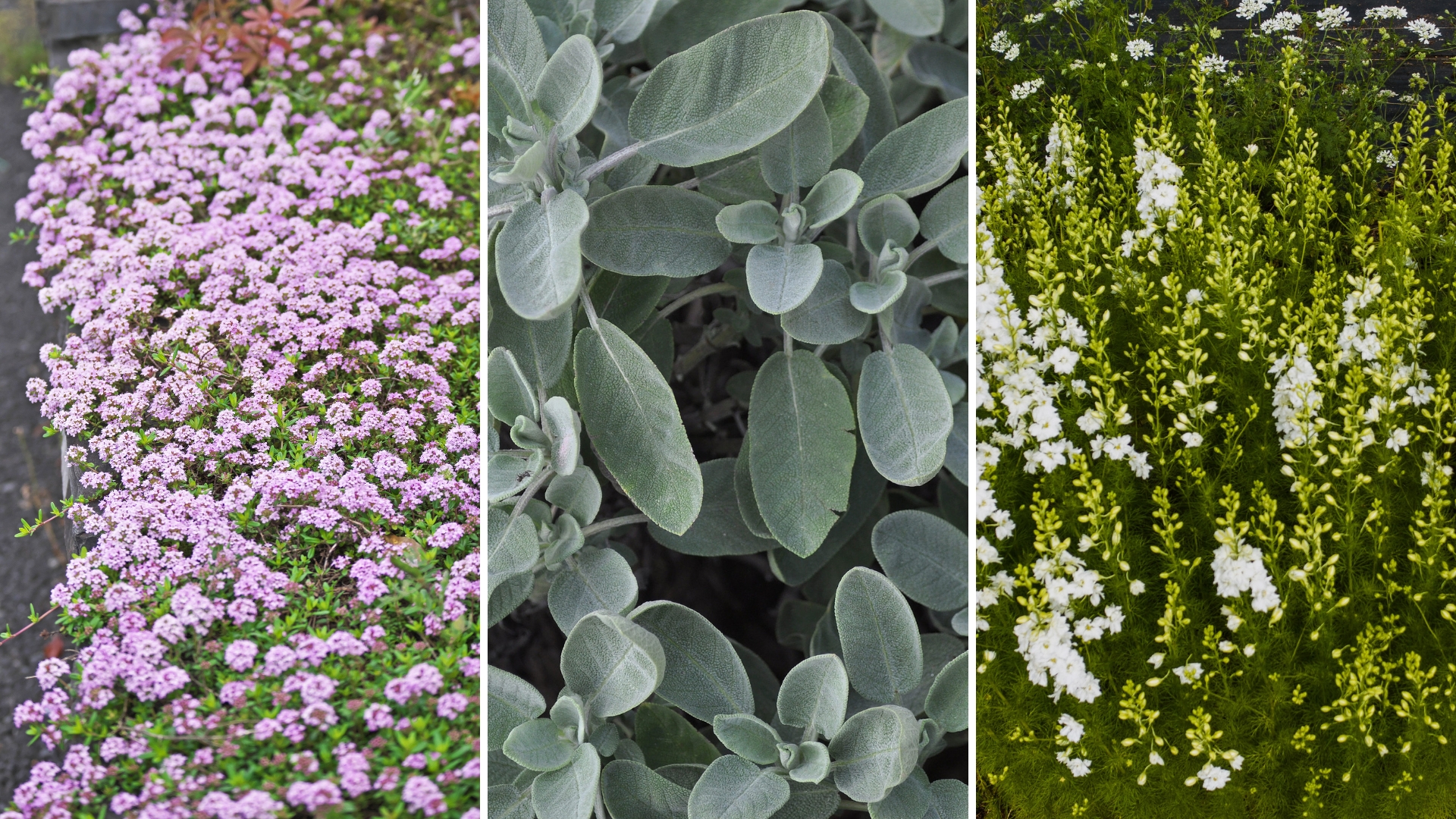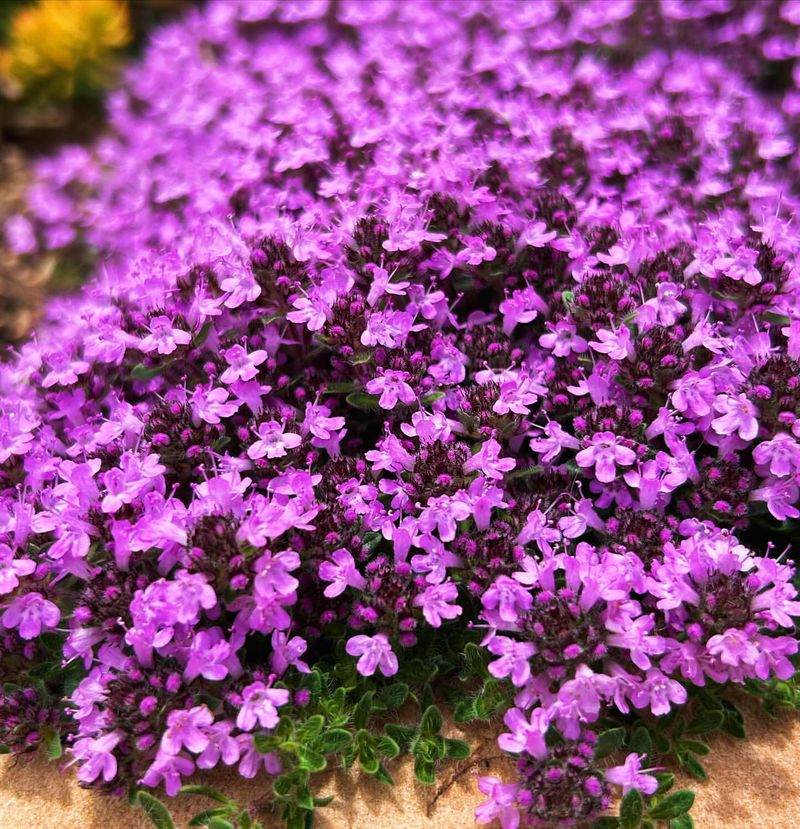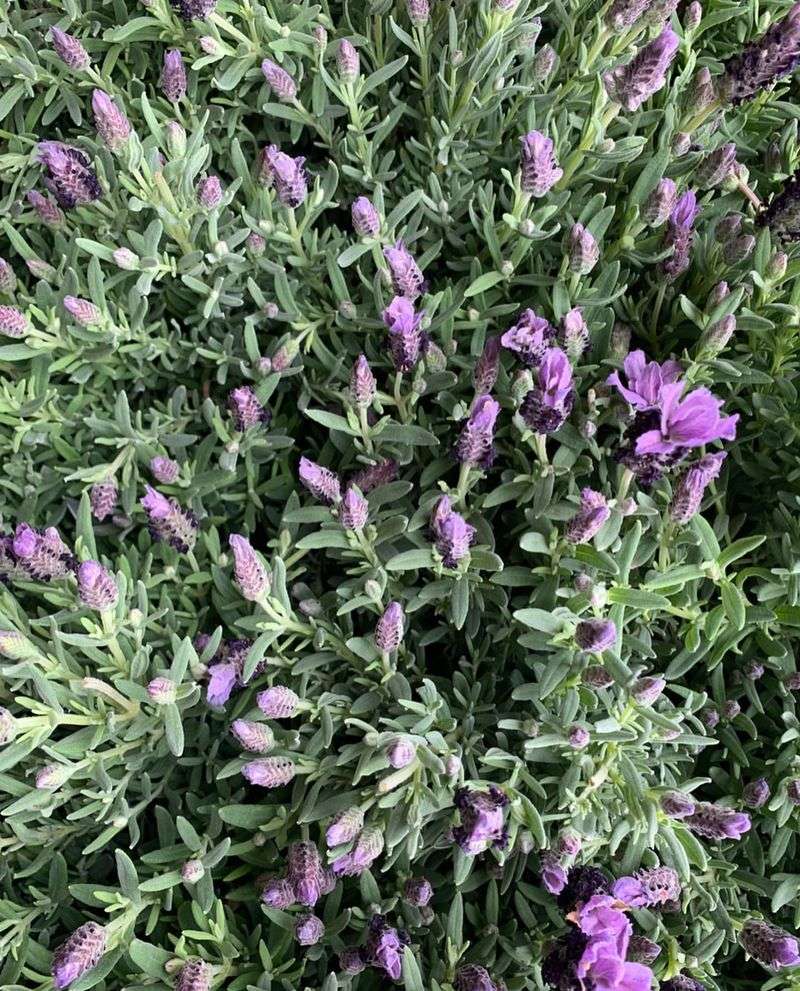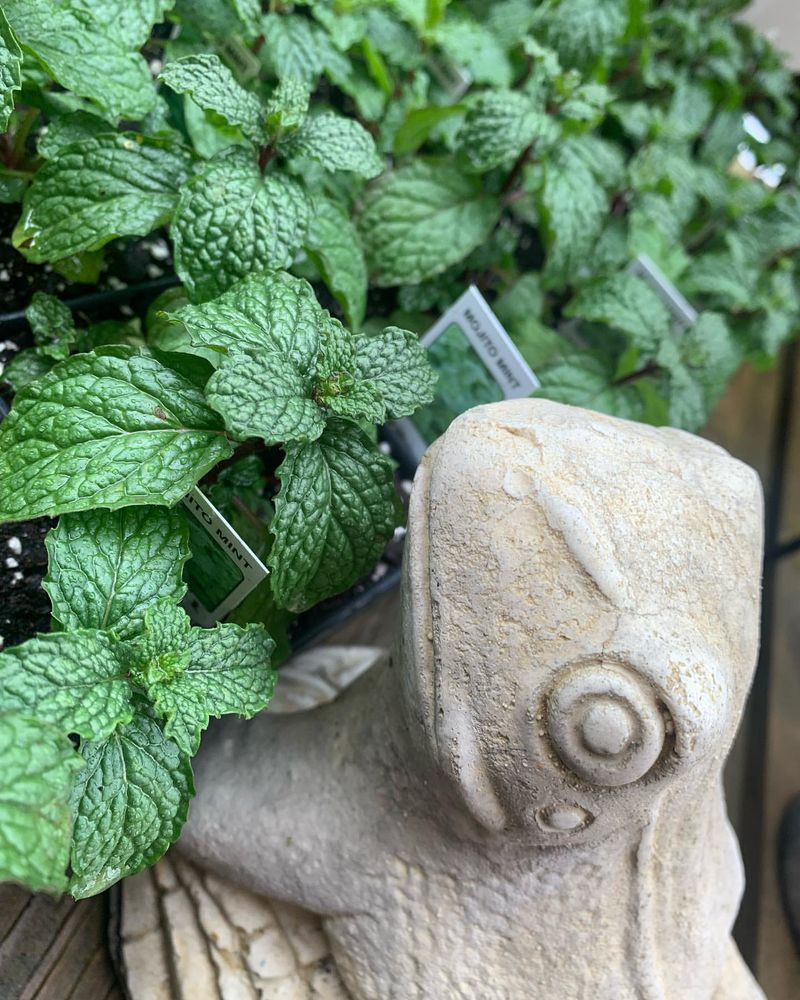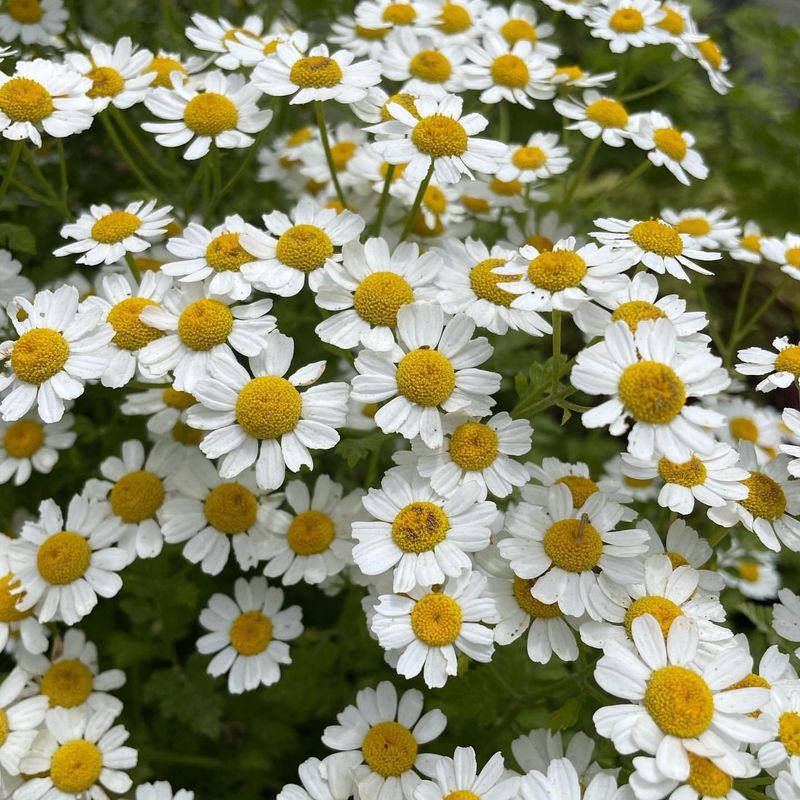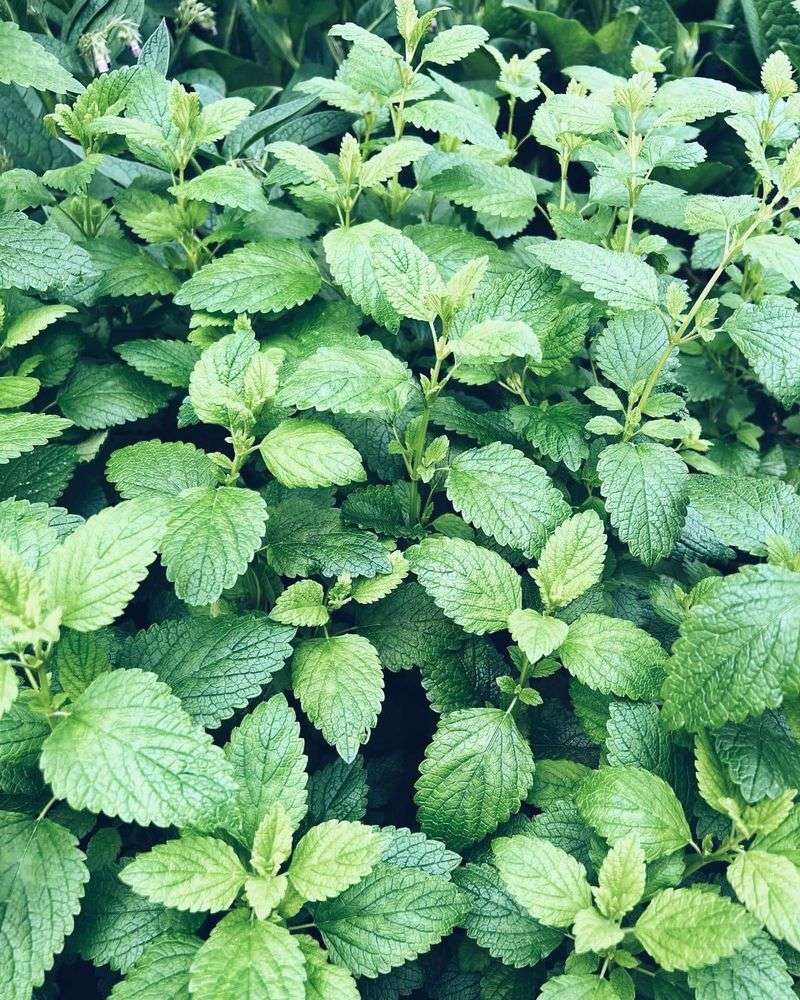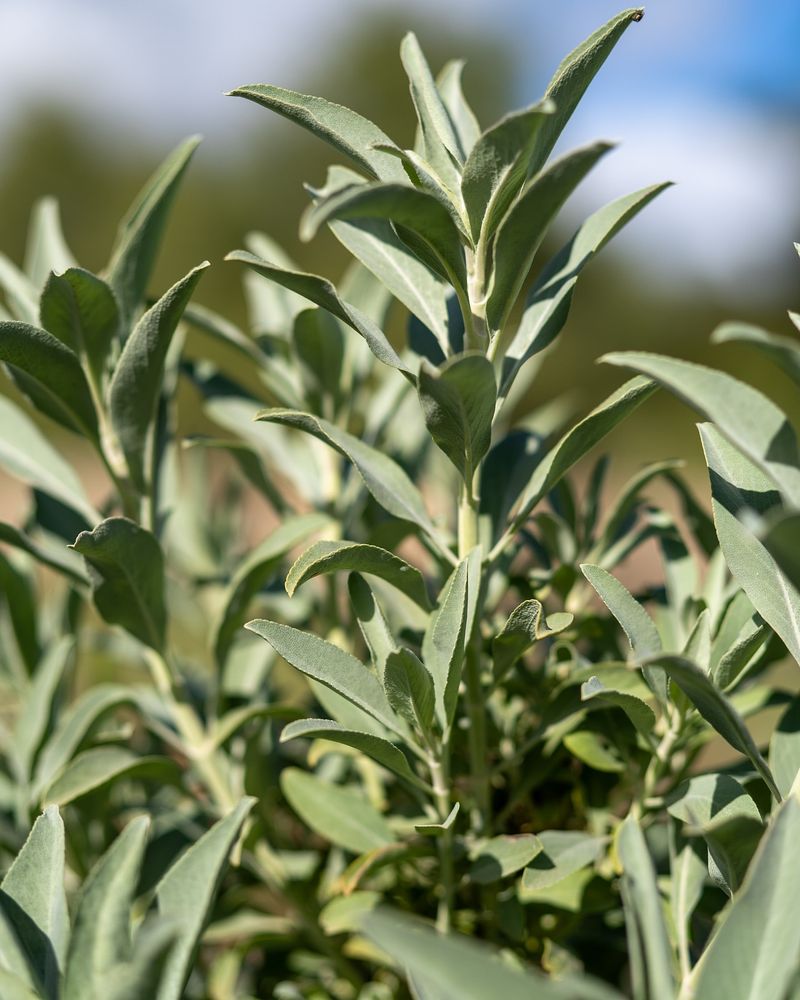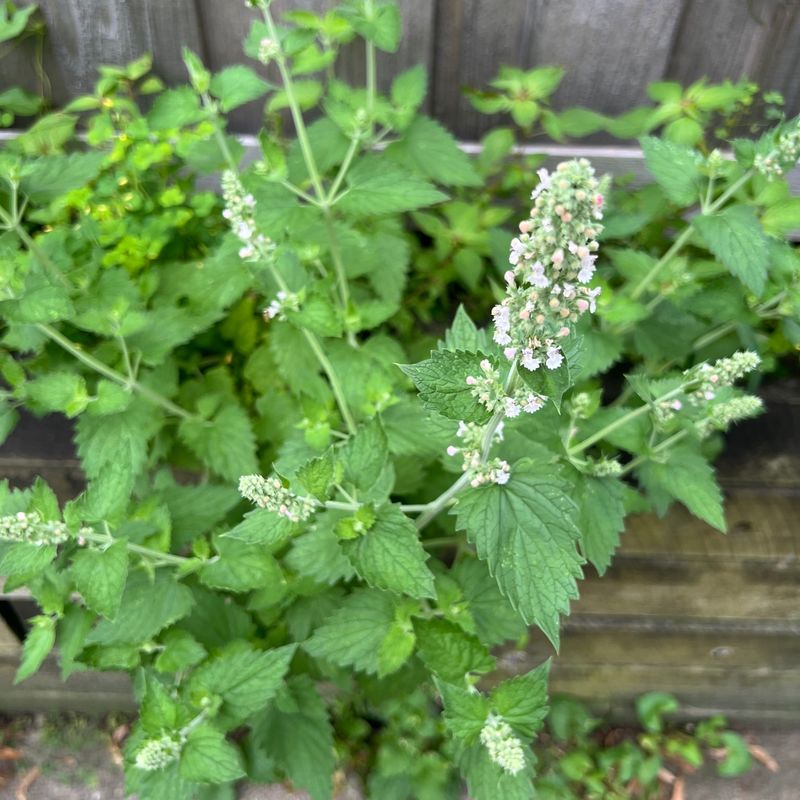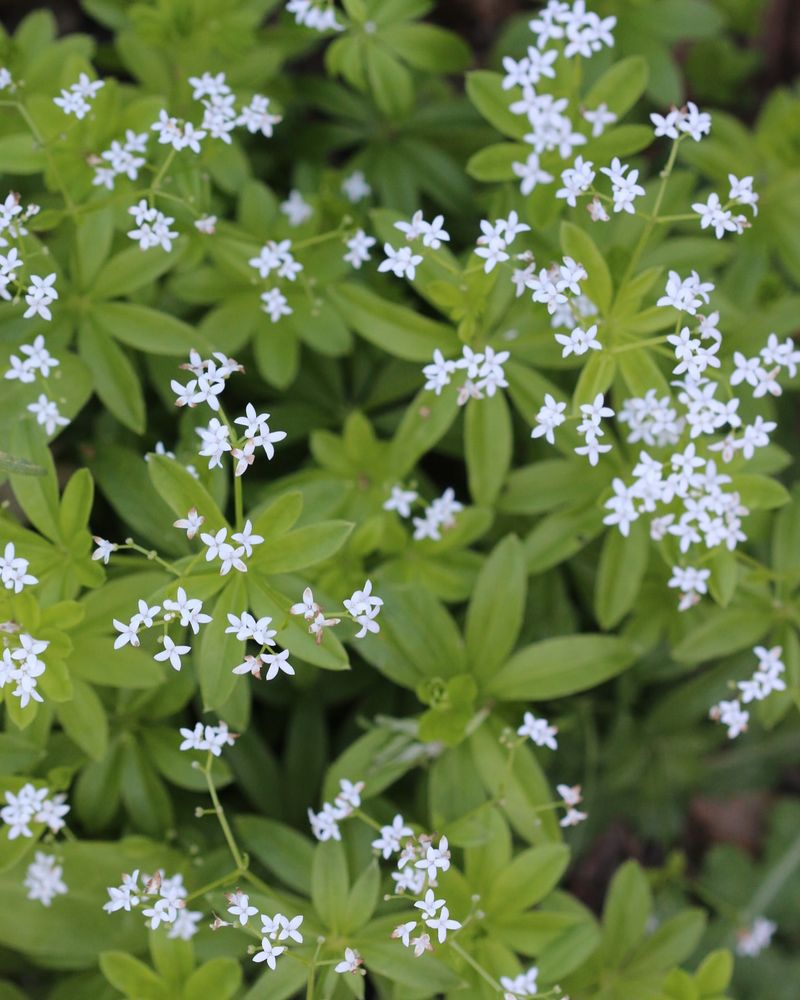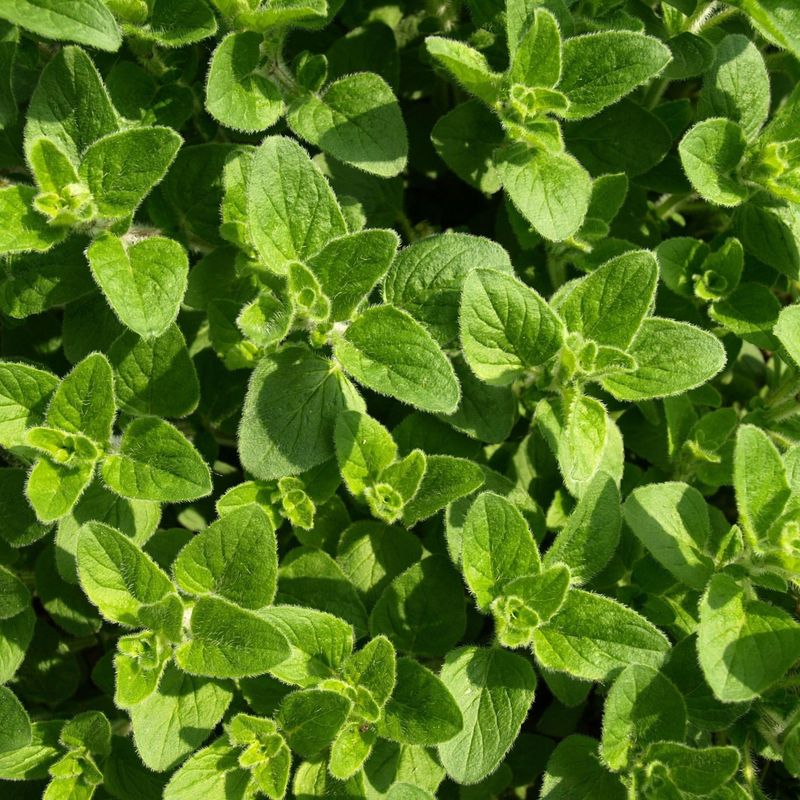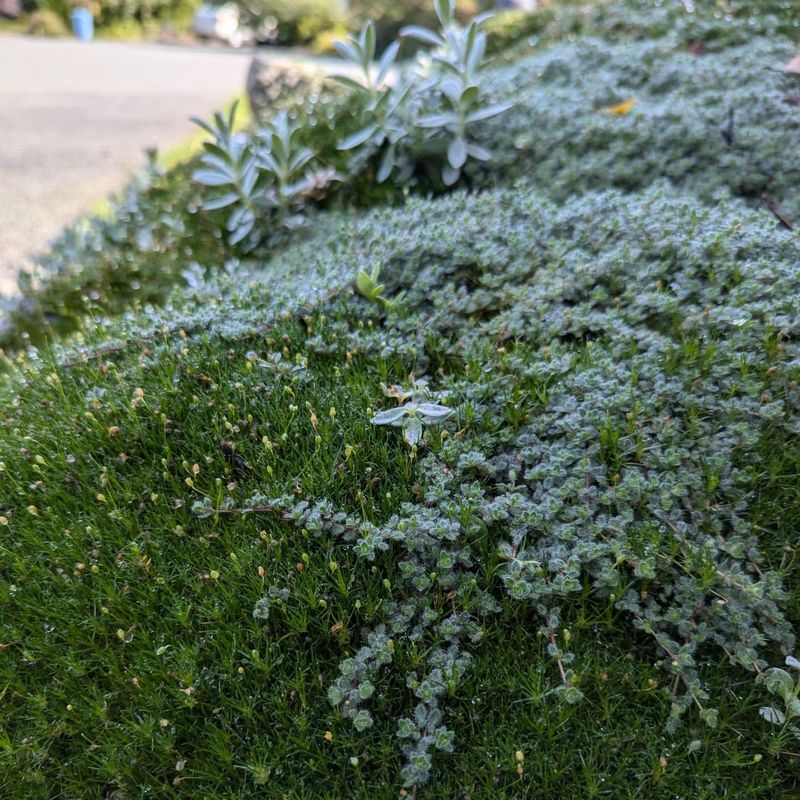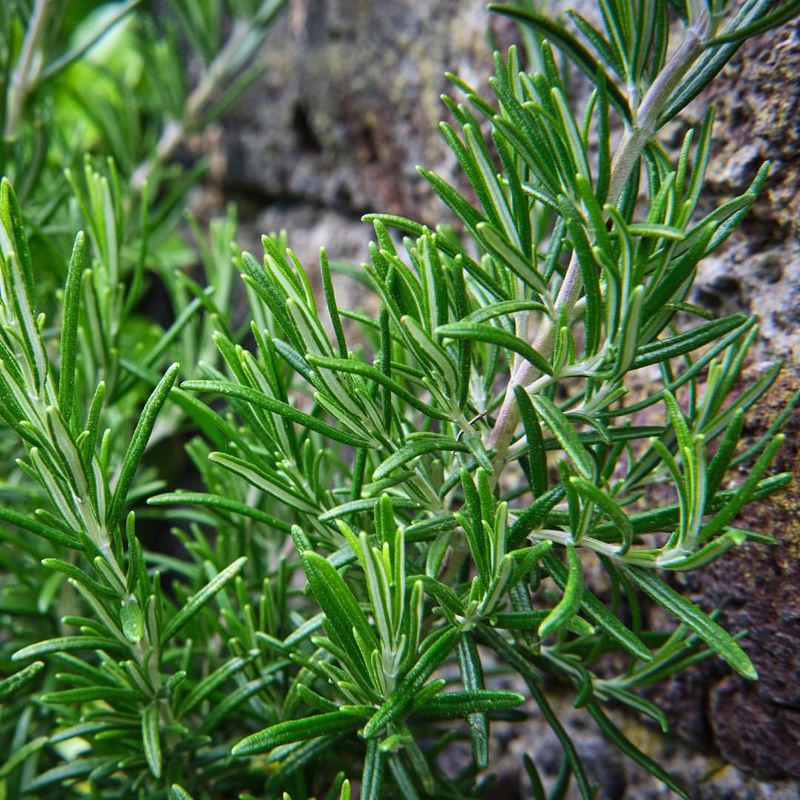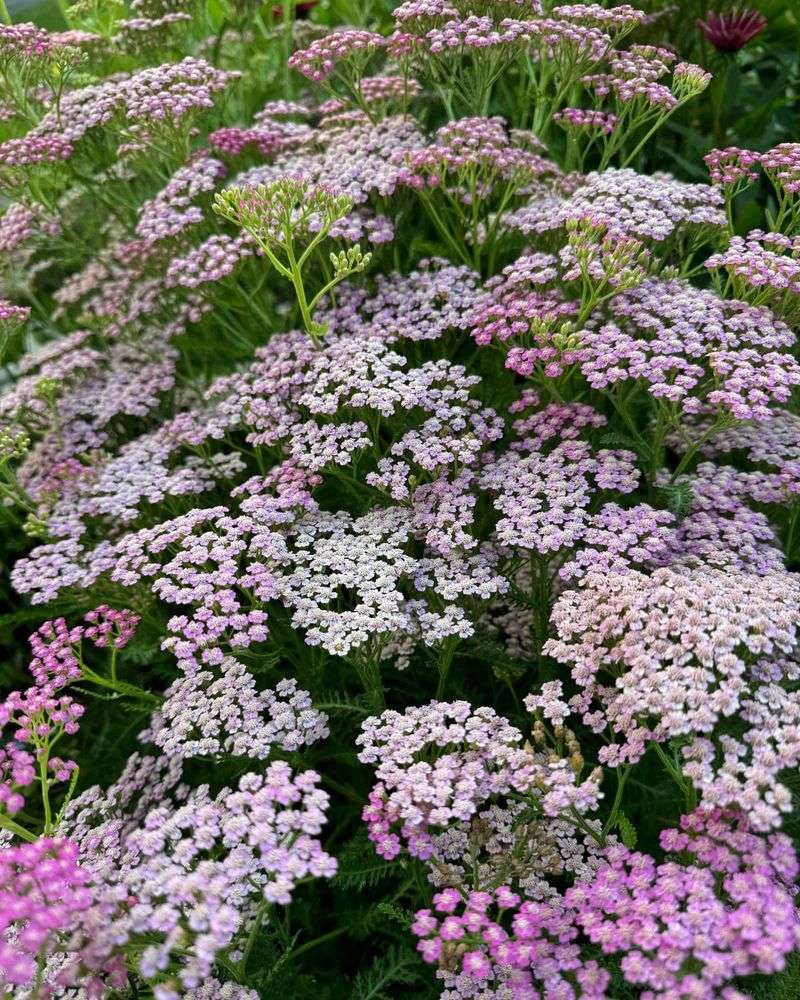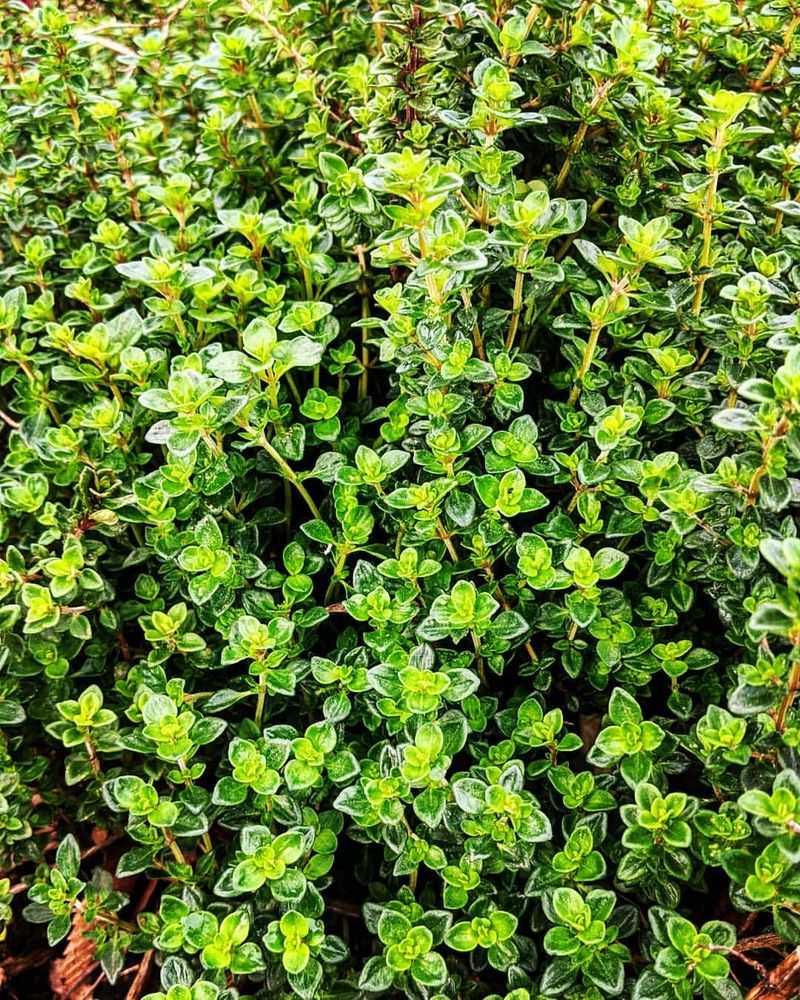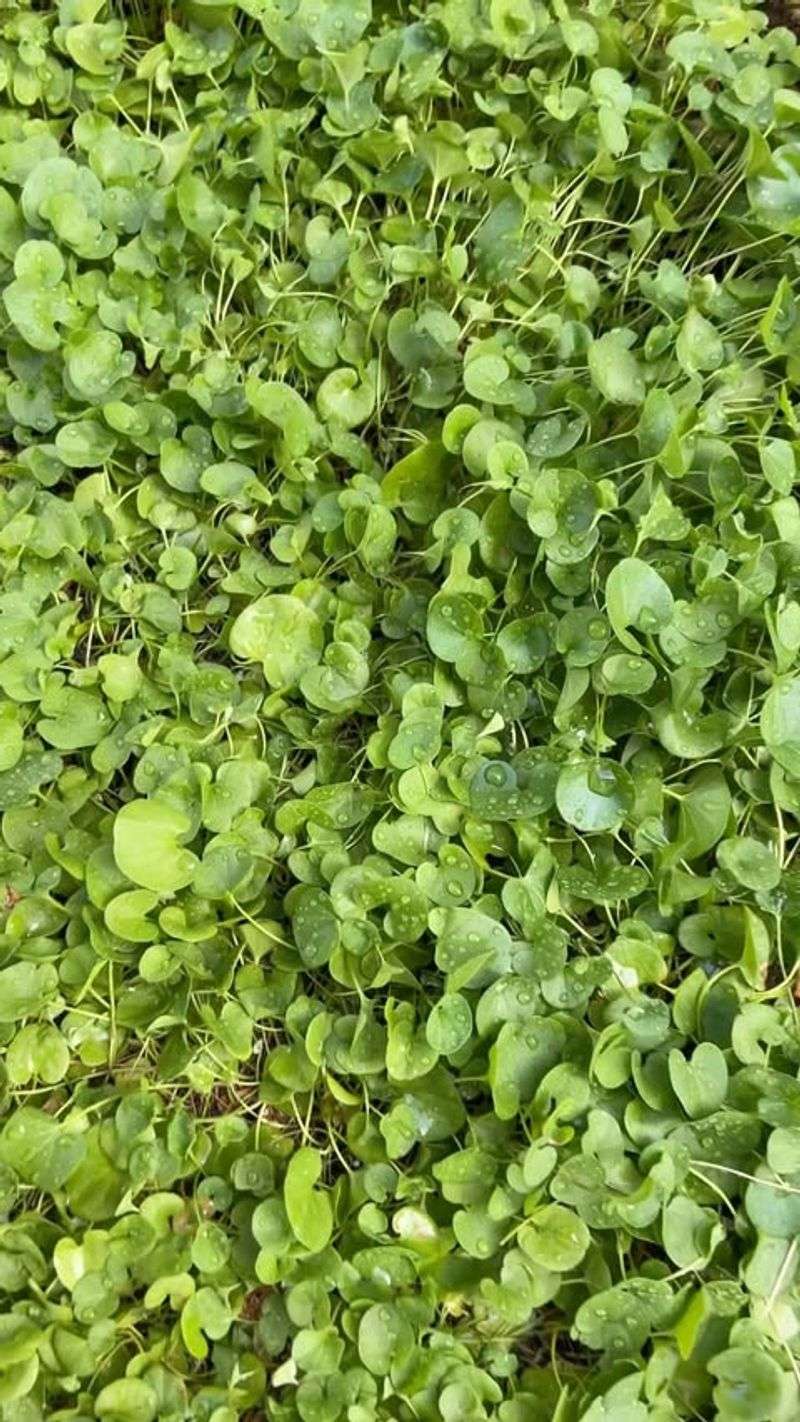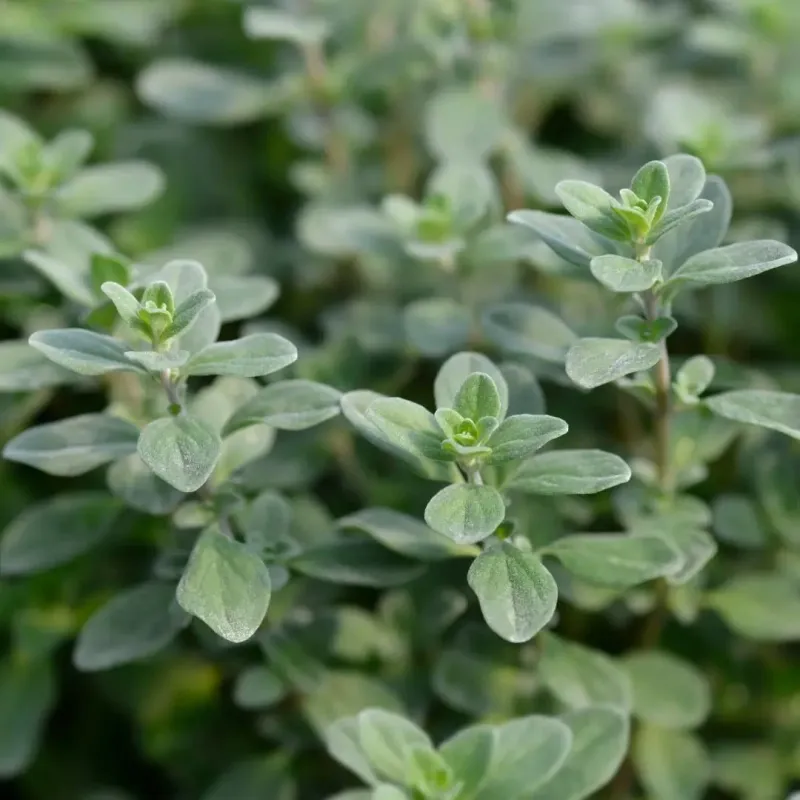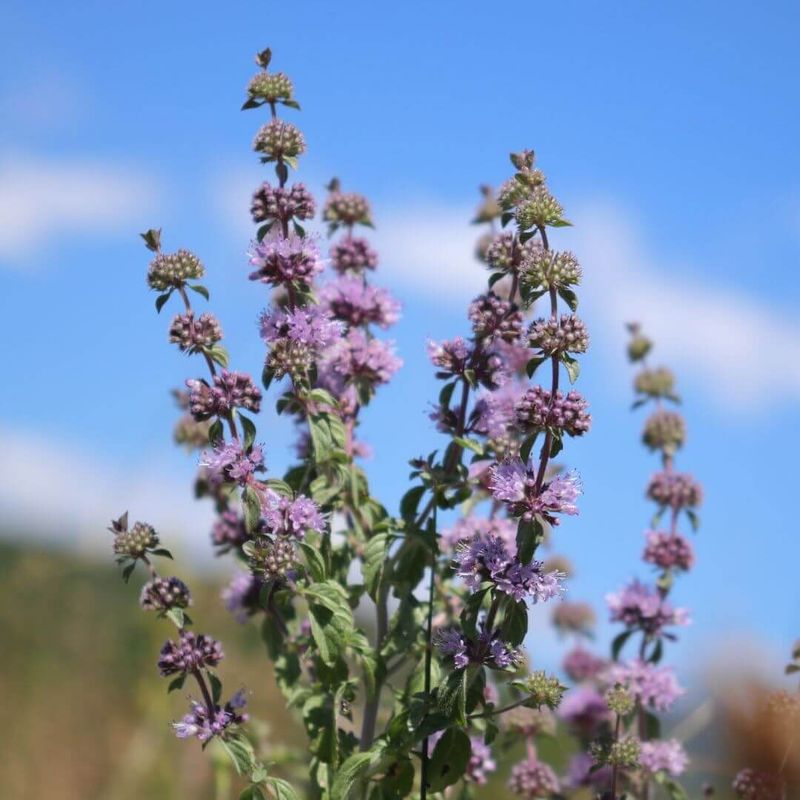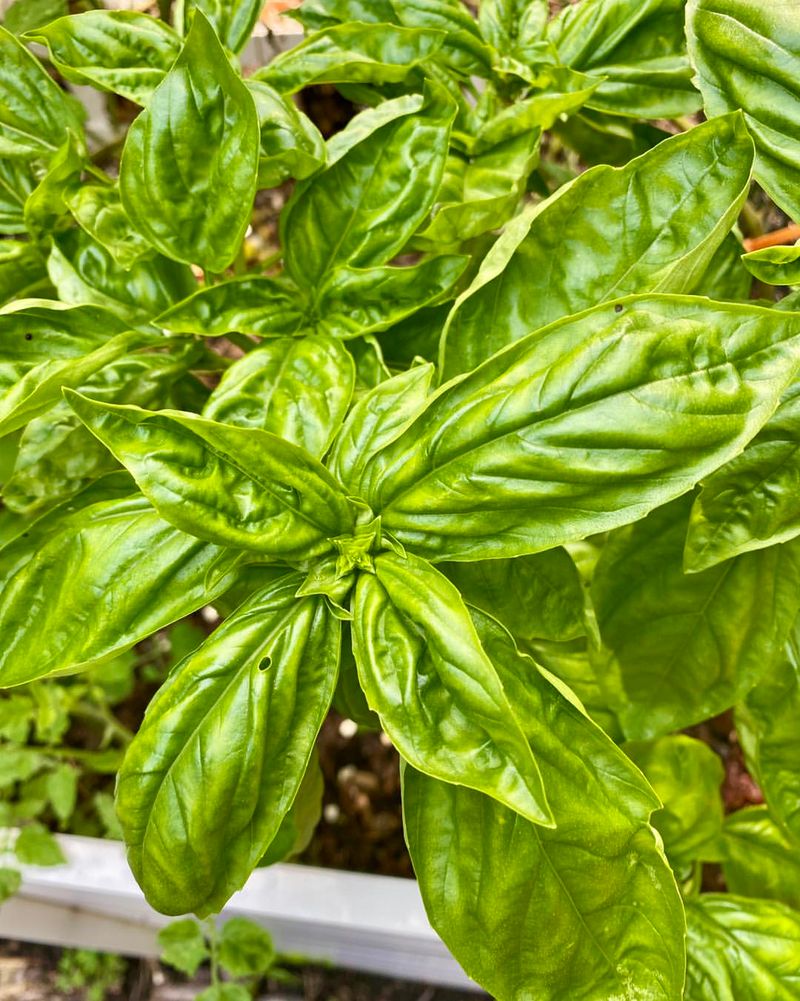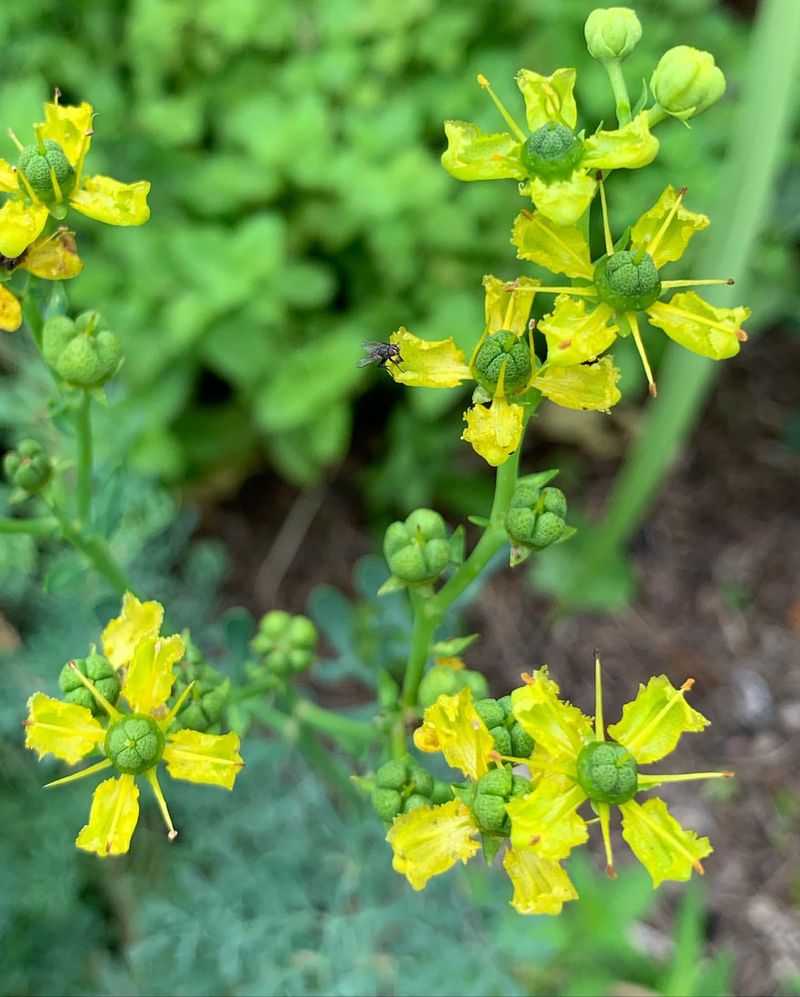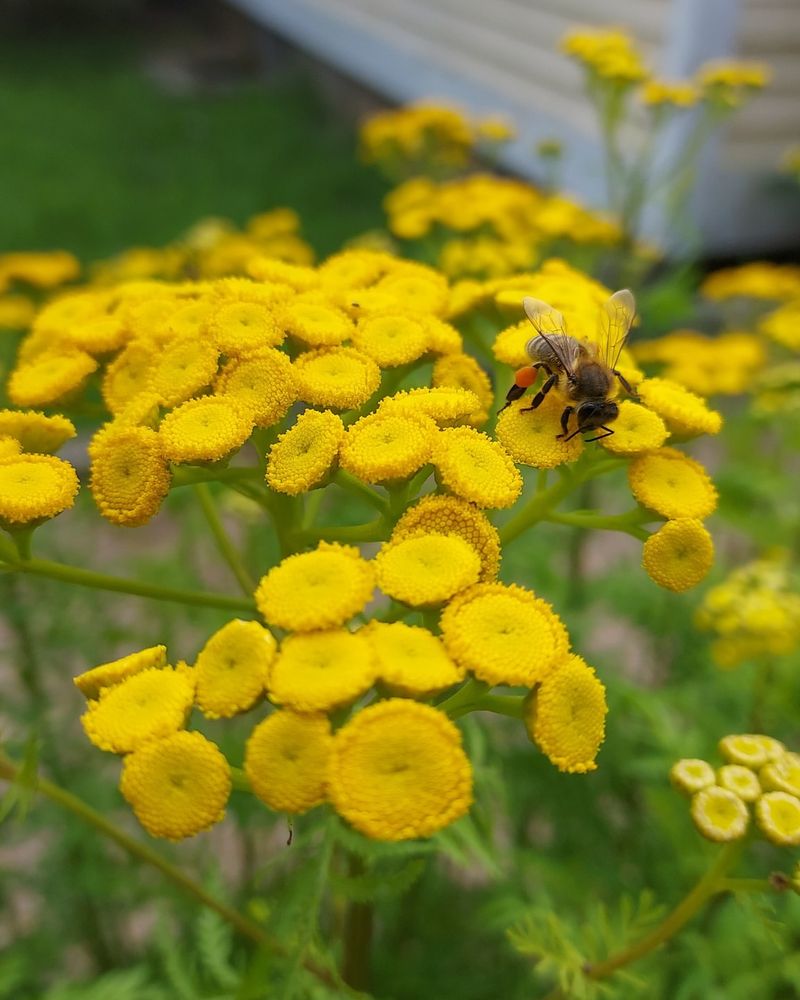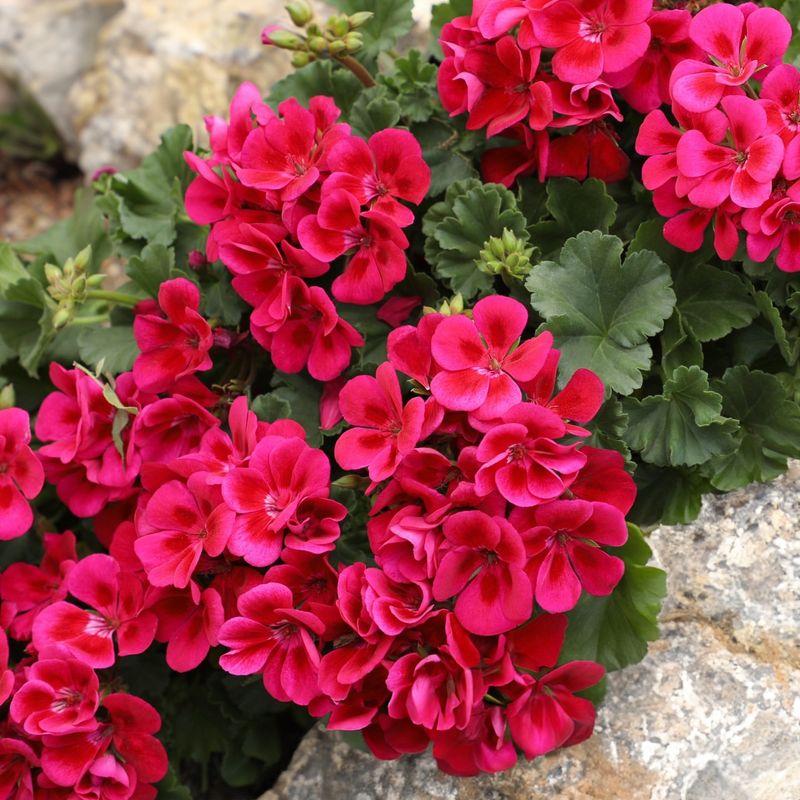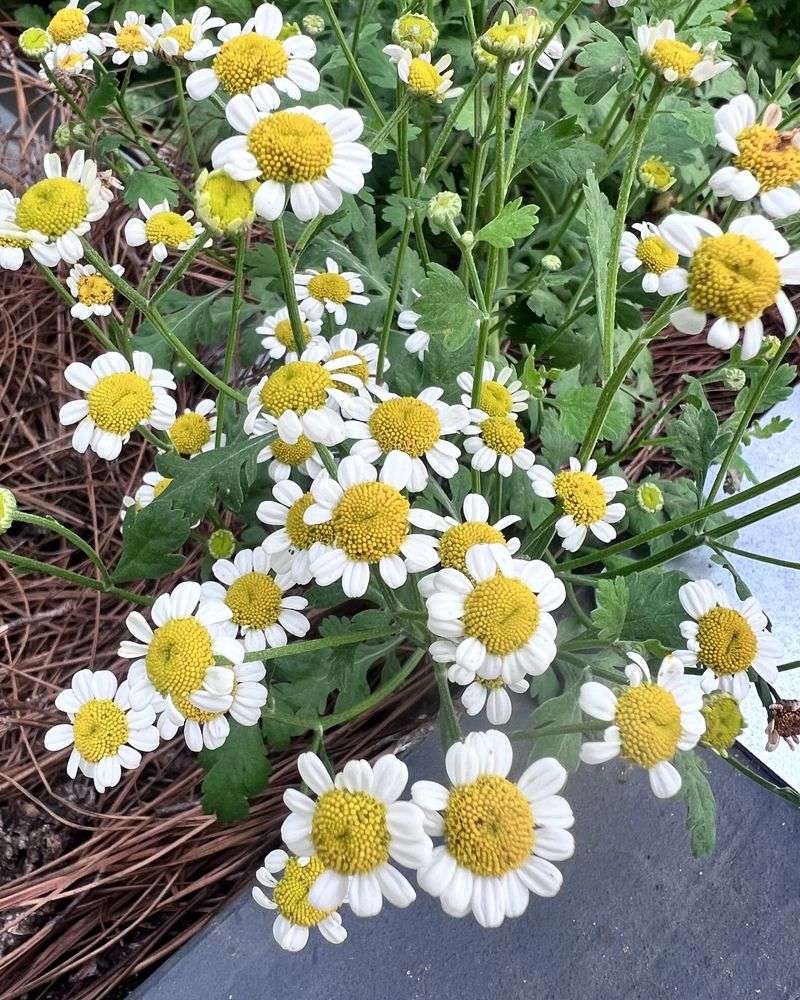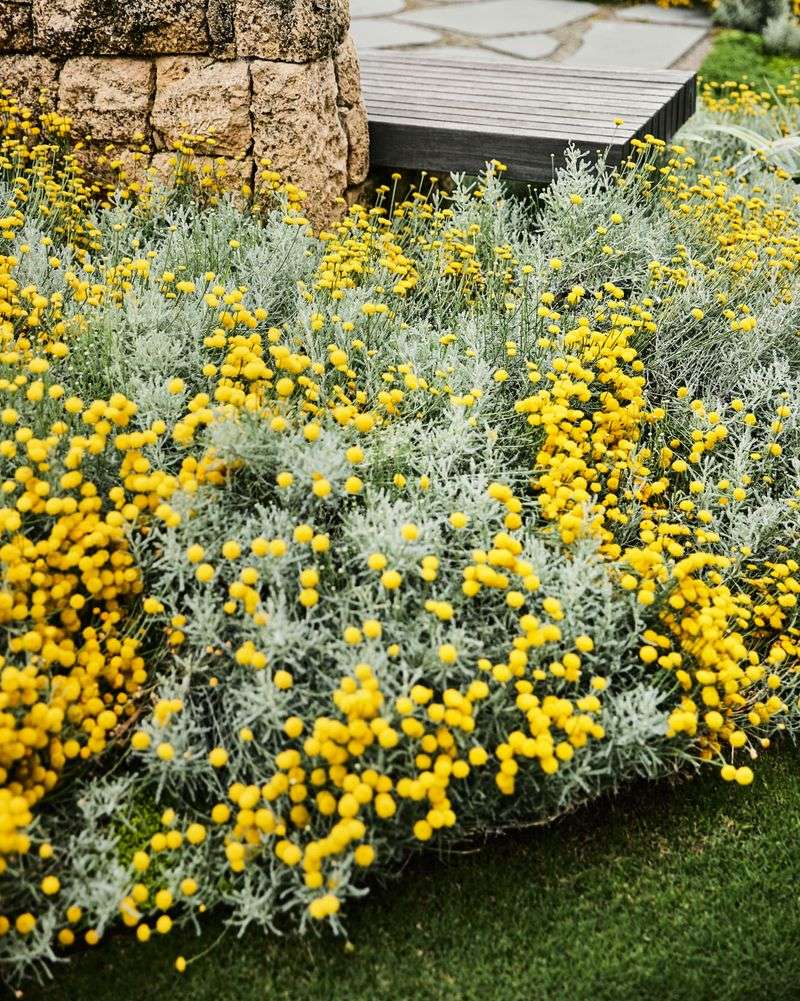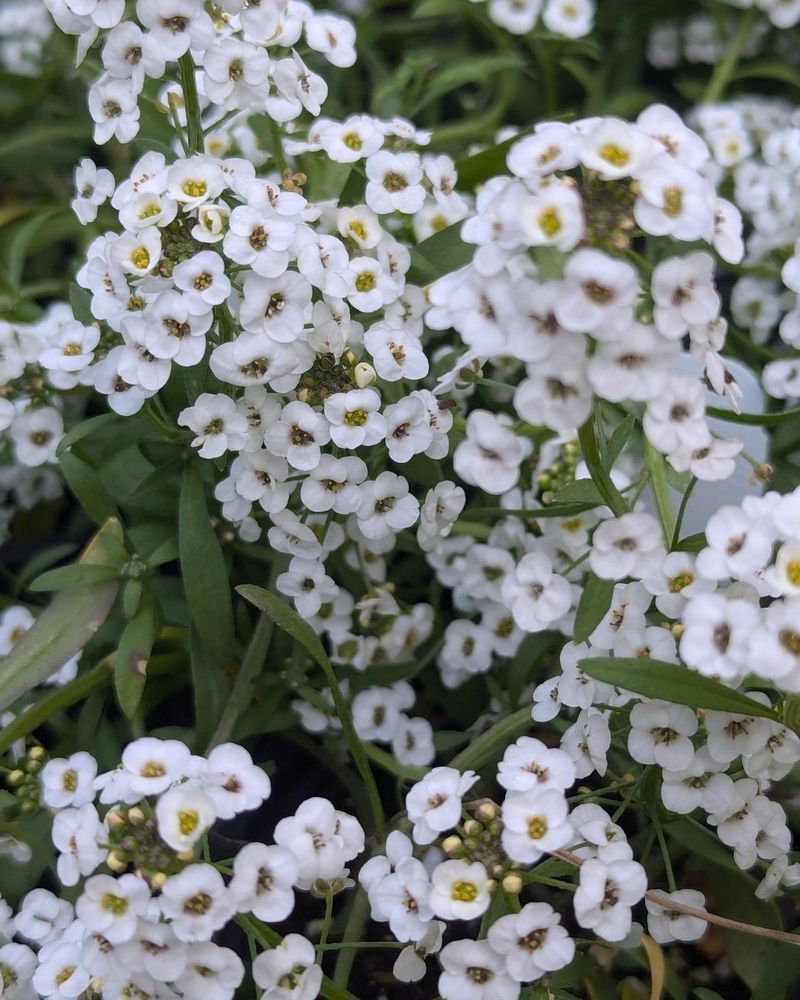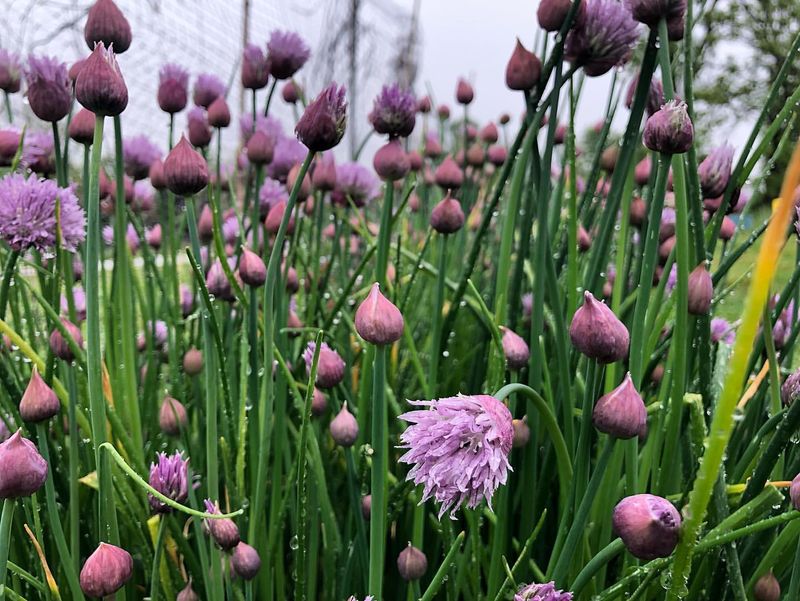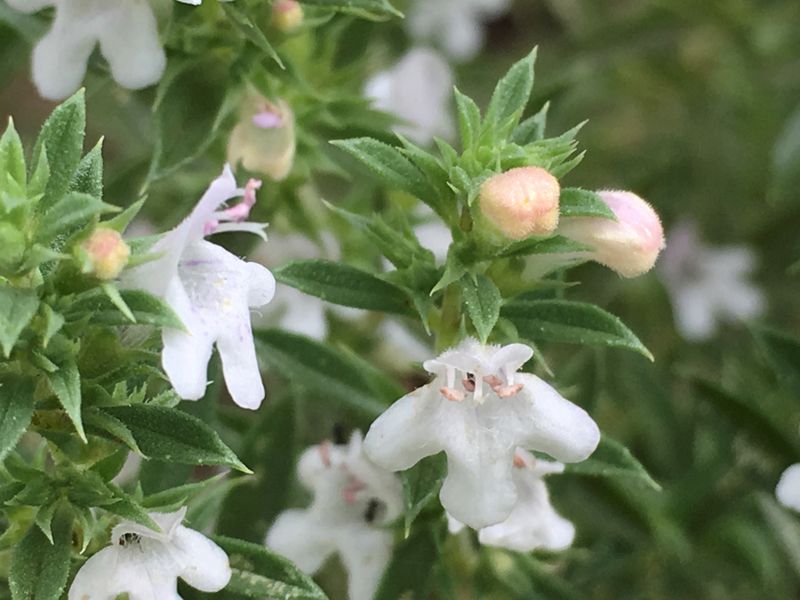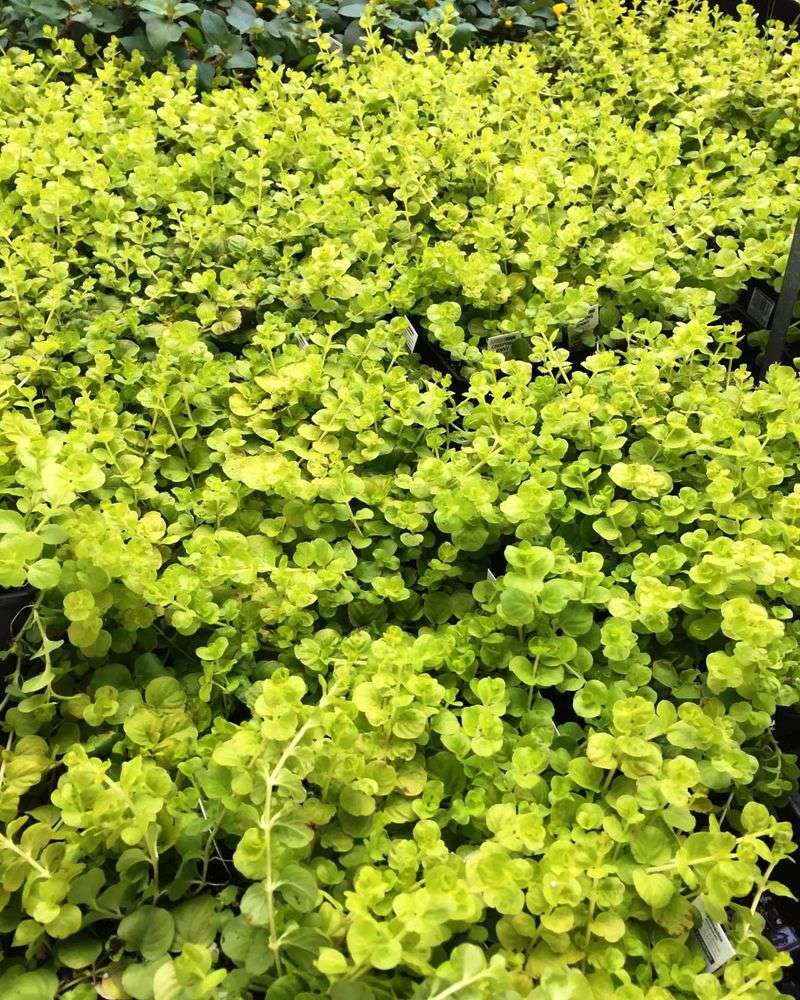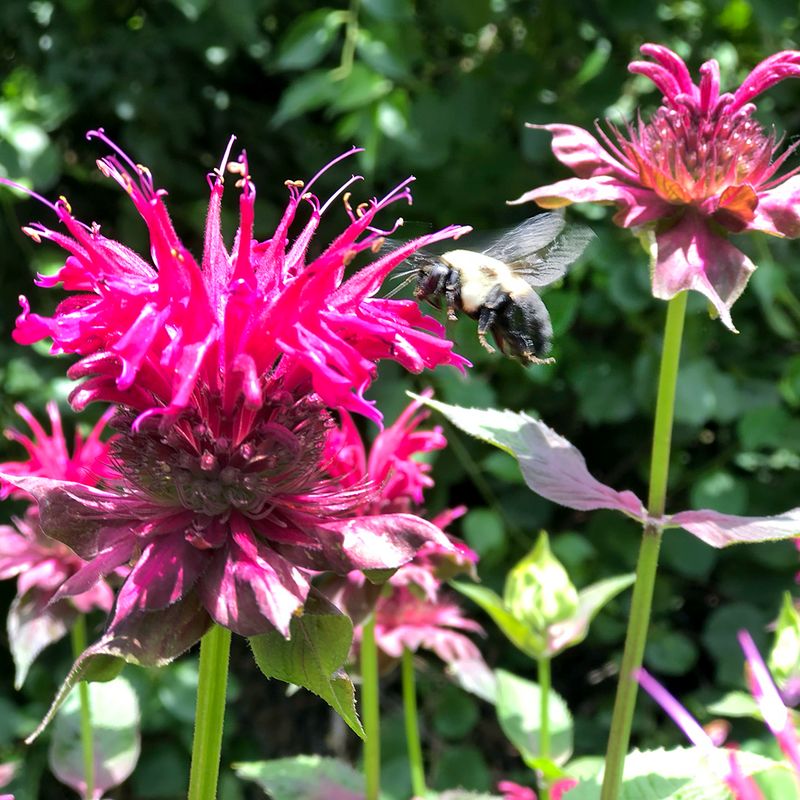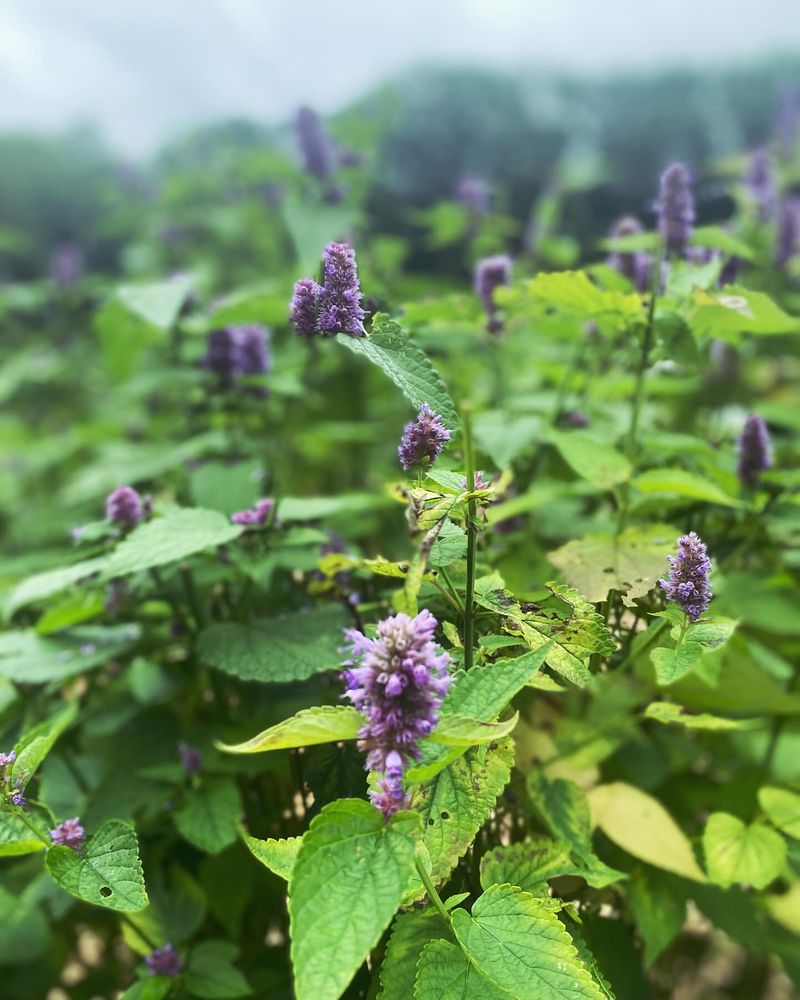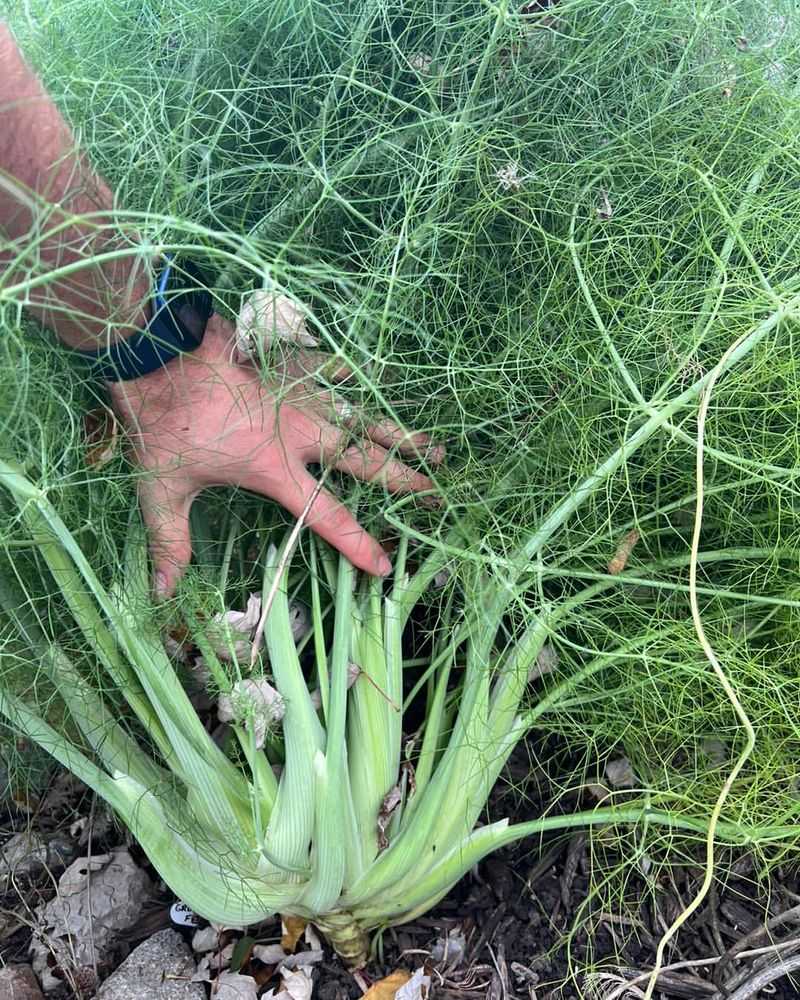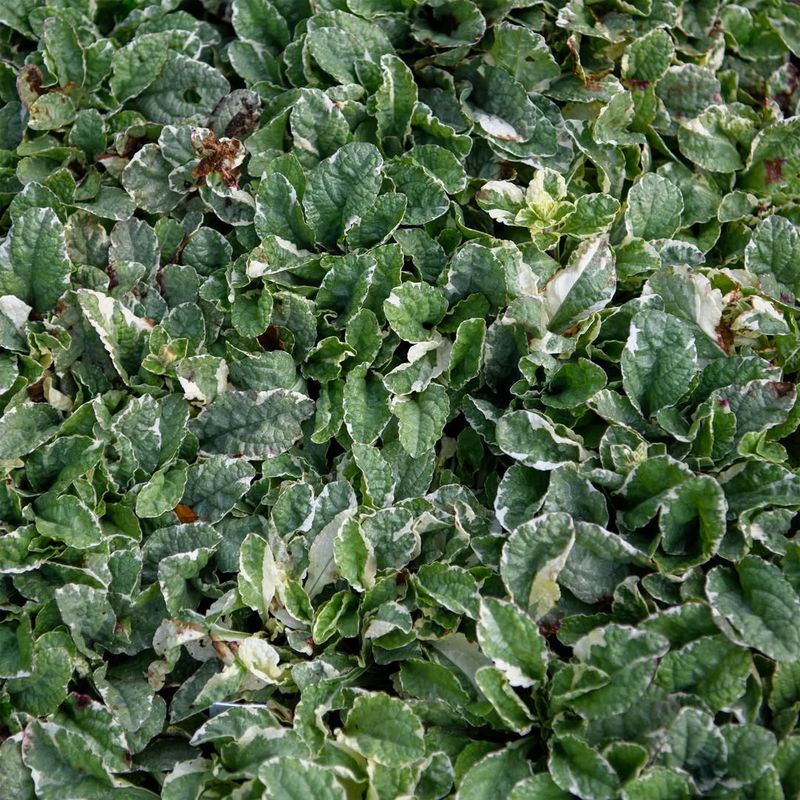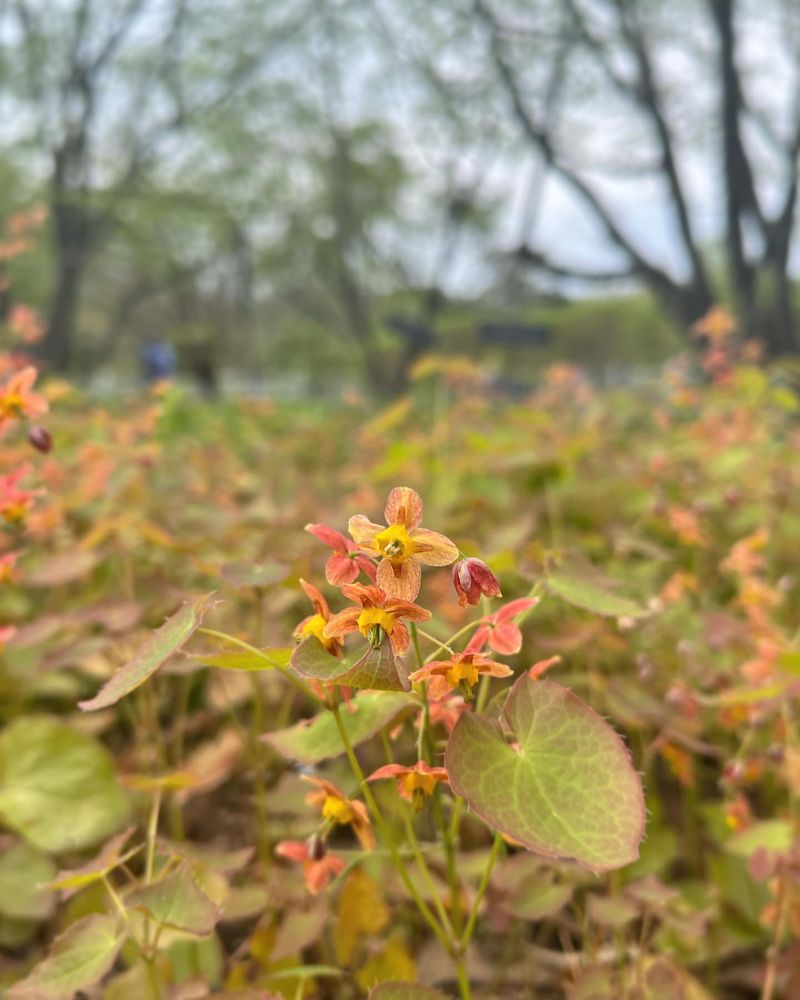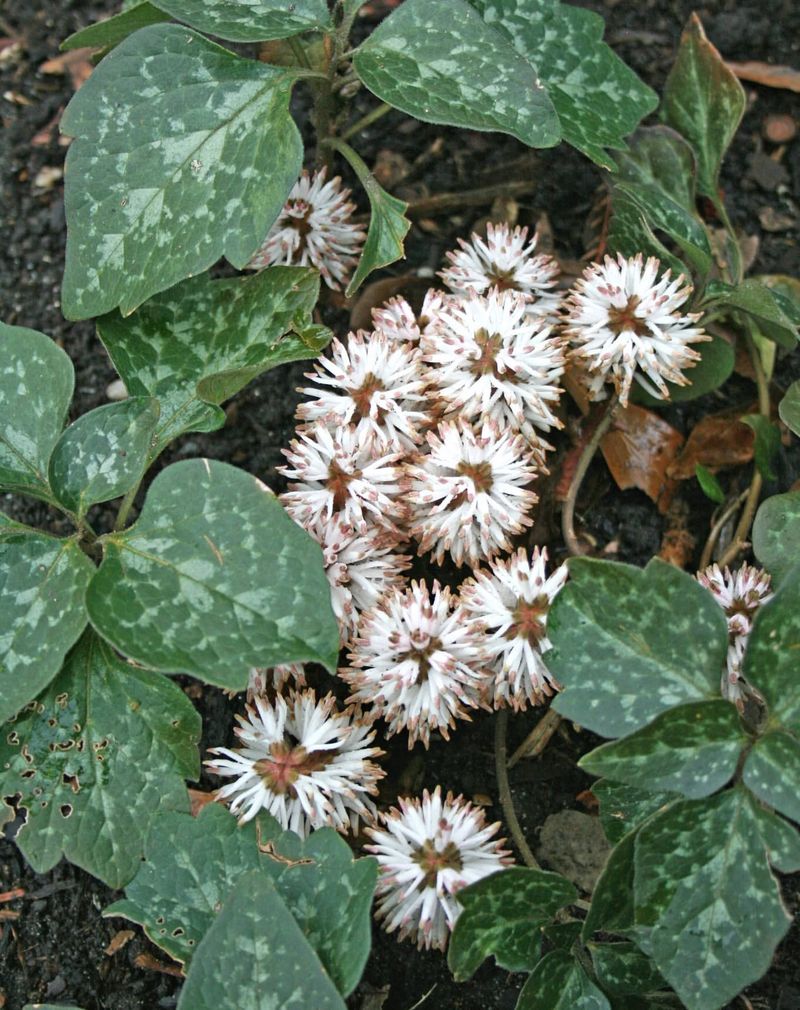Welcome to the aromatic world of fragrant ground covers, where delightful scents meet natural pest control. In this blog post, we explore 31 unique ground covers that not only add beauty and fragrance to your garden but also help keep pests at bay. Each plant offers its own distinct aroma and pest-repelling properties, making them perfect allies in maintaining a healthy and vibrant garden. Let’s embark on this olfactory journey and discover how these plants can transform your garden into a fragrant refuge, free from pesky intruders!
1. Creeping Thyme
Creeping Thyme, a charming addition to any garden, boasts vibrant purple flowers and a delightful lemony scent. This hardy ground cover is not just a pretty face; it’s a deterrent to many unwanted garden guests.
Its natural aroma confuses pests, making it difficult for them to find their favorite plants. This aromatic plant is perfect for planting between stepping stones, releasing its fragrance with each footstep.
Beyond its pest-repelling prowess, Creeping Thyme is also low-maintenance and drought-resistant, making it a gardener’s best friend.
2. Lavender
Lavender is the quintessential fragrant ground cover, renowned for its classic purple blooms and soothing aroma. This plant is not just for show; it’s a natural pest repellent, deterring moths, fleas, and mosquitoes.
The robust scent of Lavender makes it difficult for these pests to navigate, creating a protective barrier for your garden. Planted along pathways, it releases calming fragrances with every breeze.
Lavender’s drought tolerance and perennial nature make it an excellent choice for sustainable gardening. Plus, it attracts beneficial pollinators, contributing to a thriving ecosystem.
3. Mint
Mint is more than a kitchen staple; it’s a formidable foe against garden pests. Its invigorating aroma is too intense for ants, aphids, and rodents, effectively keeping them at bay.
Mint spreads quickly, so it’s best planted in containers or designated areas to control its growth. As you brush past a Mint plant, its crisp scent fills the air, offering a refreshing garden experience.
Not only is Mint a pest deterrent, but its leaves can also be harvested for culinary delights, making this multifaceted plant a valuable garden companion.
4. Chamomile
Chamomile, with its delicate white flowers and apple-like scent, is a peaceful presence in any garden. This gentle plant is a tough adversary for nematodes and other soil pests.
Its calming aroma masks the scent trails that these pests rely on, protecting nearby plants from their invasive appetites. Chamomile thrives in sunny spots and well-drained soil, adding elegance and utility to your landscape.
Beyond pest control, Chamomile flowers can be harvested to make soothing teas, providing a dual-purpose plant that’s both functional and beautiful.
5. Lemon Balm
Lemon Balm, with its fresh, lemony fragrance, is a dynamic ground cover that confuses mosquitoes and gnats. Its uplifting scent is pleasant to humans but overwhelming to many insects.
This plant thrives in sunny to partially shaded areas and grows easily, making it an excellent choice for novice gardeners. It spreads quickly, creating a lush, fragrant carpet.
In addition to its pest-repelling abilities, Lemon Balm leaves can be used for teas and culinary applications, offering a refreshing twist to your garden and kitchen.
6. Sage
Sage, a stalwart of the herb garden, brings more than flavor to the table. Its aromatic leaves are a natural deterrent to cabbage moths, carrot flies, and slugs.
The scent of Sage is intense and earthy, creating a challenging environment for pests that rely on scent to target plants. This ground cover is perfect for borders and companion planting.
Sage is drought-resistant and thrives in sunny, well-drained areas, making it both a functional and decorative choice for your garden. Plus, it attracts pollinators, enhancing biodiversity.
7. Catnip
Catnip, adored by felines, is less popular with pests! Its distinct aroma is a natural mosquito repellent, making it a valuable addition to any pest-conscious garden.
This hardy plant thrives in a variety of conditions, spreading quickly to create a fragrant ground cover. As it grows, it releases its signature scent, protecting surrounding plants.
Besides its pest-busting capabilities, Catnip can be used to make calming teas for humans. Just be prepared for visits from neighborhood cats, eager to enjoy its effects!
8. Sweet Woodruff
Sweet Woodruff, with its whorls of dainty white flowers, brings a touch of elegance and practicality to the garden. Known for its sweet scent, resembling freshly mown hay, it helps deter snails and slugs.
This plant thrives in shaded areas, making it ideal for under trees or in woodland gardens. Its fragrance intensifies when dried, adding versatility.
As a ground cover, Sweet Woodruff forms a dense mat that suppresses weeds, while its pleasant aroma adds an extra layer of protection against unwanted pests.
9. Oregano
Oregano, a staple in Mediterranean cuisine, doubles as a pest deterrent. Its robust, spicy aroma is unappealing to many insects, including aphids and spider mites.
This hardy plant thrives in sunny conditions, spreading to form a fragrant ground cover that adds both utility and beauty to your garden. Oregano’s aroma confuses pests, protecting more vulnerable plants nearby.
Besides its defensive properties, Oregano leaves can be harvested for culinary use, providing a flavorful addition to your kitchen repertoire while maintaining a healthy garden.
10. Woolly Thyme
Woolly Thyme is not only visually appealing with its fuzzy, silver foliage, but also effective in pest control. Its subtle aroma deters pests, particularly those sensitive to scent.
This low-growing ground cover is perfect for filling in spaces between stepping stones or along pathways, releasing a gentle fragrance when disturbed. Woolly Thyme thrives in sunny, well-drained areas.
Beyond its pest-repelling capabilities, its soft texture adds an interesting tactile element to your garden, making it a delightful choice for sensory landscapes.
11. Rosemary
Rosemary, with its needle-like leaves and aromatic allure, is more than just a culinary herb. Its pungent scent is disliked by carrot flies, cabbage moths, and slugs.
This hardy plant thrives in sunny, well-drained areas, forming a fragrant ground cover that doubles as a natural pest barrier. Rosemary’s aroma provides a sensory delight while boosting garden defenses.
Beyond pest control, Rosemary’s versatility extends to the kitchen, where its leaves can be used to enhance a variety of dishes, merging culinary and horticultural delight.
12. Yarrow
Yarrow, with its feathery leaves and clusters of white flowers, is a resilient ground cover that stands as a natural pest deterrent. Its scent deters a variety of insects, including aphids and beetles.
This plant thrives in sunny conditions, offering both beauty and utility to your garden. Yarrow’s robust nature makes it an excellent choice for borders and open spaces.
In addition to its pest-repelling properties, Yarrow attracts beneficial insects like ladybugs, contributing to a balanced and healthy ecosystem within your garden.
13. Lemon Thyme
Lemon Thyme, as vibrant in fragrance as it is in appearance, offers a delightful lemon scent that’s unappealing to pests like mosquitoes and flies.
This hardy ground cover thrives in sunny spots, creating a fragrant barrier that protects your garden. Lemon Thyme’s scent confuses pests, making it difficult for them to locate their targets.
Besides its pest-repelling abilities, Lemon Thyme can be used in culinary applications, adding a zesty twist to dishes. Its dual-purpose nature makes it a valuable garden addition.
14. Corsican Mint
Corsican Mint, though small in stature, packs a punch with its intense minty aroma. This ground-hugging plant is a natural deterrent to ants and aphids.
Ideal for planting between stepping stones or in shady areas, Corsican Mint releases its invigorating scent with each step. Its lush, dense growth forms a soft, fragrant carpet.
Aside from pest control, Corsican Mint’s leaves can be harvested for culinary use, offering a refreshing flavor to desserts and drinks, making it a delightful garden companion.
15. Marjoram
Marjoram, often overshadowed by its oregano cousin, shines as a fragrant ground cover and pest deterrent. Its sweet, citrusy scent discourages aphids and mosquitoes.
Thriving in sunny, well-drained locations, Marjoram spreads into a lush carpet, offering both beauty and utility. Its aroma disrupts pest navigation, protecting nearby plants.
Beyond its garden benefits, Marjoram leaves can be used in cooking, providing a subtle flavor to dishes. This multifunctional plant adds a touch of Mediterranean flair to your garden and kitchen alike.
16. Pennyroyal
Pennyroyal, a small but mighty plant, is renowned for its pest-repelling capabilities. Its minty aroma is particularly effective against fleas and ticks.
This low-growing plant thrives in moist, well-drained soils, forming a fragrant ground cover that deters unwanted visitors. Its scent creates an inhospitable environment for pests.
Caution is advised as Pennyroyal can be toxic if ingested, making it a garden-only deterrent. It’s a powerful ally in the fight against pests, adding a touch of beauty to your landscape.
17. Basil
Basil, the beloved culinary herb, doubles as a natural pest repellent. Its spicy aroma is unappealing to flies and mosquitoes, making it a valuable garden ally.
Thriving in sunny areas, Basil spreads to create a fragrant ground cover that protects more vulnerable plants nearby. Its scent confuses pests, safeguarding your garden.
Beyond pest control, Basil leaves can be harvested for culinary use, adding flavor to various dishes. This versatile herb brings both utility and culinary delight to your garden.
18. Rue
Rue, with its distinctive blue-green foliage, is a unique ground cover known for its pest-repelling properties. Its strong scent deters beetles and flies effectively.
This hardy plant thrives in sunny, dry conditions, offering both aesthetic appeal and practical benefits. Rue’s aroma creates a challenging environment for pests.
While Rue is an effective deterrent, caution is advised since its sap can irritate the skin. Despite this, it remains a popular choice for gardeners seeking natural pest control solutions.
19. Tansy
Tansy, with its bright yellow button flowers, adds a splash of color and function to your garden. Its pungent scent is disliked by ants, beetles, and flies.
This plant thrives in sunny locations, offering a vibrant ground cover that also protects your garden. Tansy’s aroma confuses pests, disrupting their feeding patterns.
Beyond its pest-repelling capabilities, Tansy can attract beneficial insects like bees, promoting a healthy garden ecosystem. Its dual-purpose nature makes it a valuable addition to any garden.
20. Geranium
Geraniums, with their vibrant blooms and unique scent, offer more than just beauty to your garden. Their aroma is disliked by beetles and other common pests.
Thriving in sunny, well-drained areas, Geraniums provide a colorful ground cover that doubles as a natural pest barrier. Their fragrance disrupts pest navigation.
Besides pest control, Geraniums are beloved for their striking appearance, adding a splash of color to any landscape. They’re a perfect choice for gardeners seeking both beauty and functionality.
21. Feverfew
Feverfew, adorned with dainty white flowers, is a fragrant ground cover that holds its own against pests. Its bitter aroma deters mosquitoes and other biting insects.
This hardy plant thrives in sunny locations, forming a protective barrier for your garden. Feverfew’s scent confuses pests, making it difficult for them to locate their targets.
Beyond pest control, Feverfew is known for its medicinal properties, often used in herbal remedies. Its multifunctional nature makes it a valuable addition to any garden.
22. Santolina
Santolina, also known as Lavender Cotton, is a fragrant ground cover with silvery foliage and a strong aroma that repels moths and mosquitoes.
This drought-tolerant plant thrives in sunny, well-drained locations, offering both aesthetic appeal and pest control. Its scent forms a barrier that deters insects effectively.
Besides its defensive role, Santolina can be shaped into attractive hedges or topiaries, adding structure to your garden. Its versatility and fragrance make it a delightful addition to any landscape.
23. Sweet Alyssum
Sweet Alyssum, with its clusters of tiny white flowers, brings both beauty and function to the garden. Its sweet scent deters aphids and attracts beneficial insects.
Thriving in sunny areas, this ground cover forms a fragrant border that protects your garden. Sweet Alyssum’s aroma confuses pests, providing a natural defense.
Beyond pest control, its dense growth suppresses weeds, making it a low-maintenance choice for gardeners. This versatile plant enhances both the appearance and health of your garden.
24. Chives
Chives, with their mild onion scent, offer more than just culinary delights. Their aroma is disliked by aphids and Japanese beetles, making them a natural pest deterrent.
Thriving in sunny, well-drained areas, Chives create a fragrant ground cover that protects your garden. Their scent disrupts pest feeding patterns, safeguarding plants.
Besides pest control, Chive leaves can be harvested for culinary use, adding flavor to a variety of dishes. This versatile herb brings both utility and culinary delight to your garden.
25. Winter Savory
Winter Savory, with its peppery aroma, is a hardy ground cover that repels bean beetles and other pests. Its scent creates an inhospitable environment for these unwanted visitors.
Thriving in sunny, well-drained areas, Winter Savory forms a dense, fragrant mat that protects your garden. Its aroma confuses pests, disrupting their feeding habits.
Beyond pest control, Winter Savory can be used in cooking, adding a spicy note to dishes. Its multifunctional nature makes it a valuable addition to any garden.
26. Creeping Jenny
Creeping Jenny, with its vibrant green foliage, is a versatile ground cover that thrives in various garden conditions. Its aroma is subtle but effective in deterring pests, especially when planted in clusters. This plant adapts well to both sunny and shady areas, making it a popular choice.
Gardeners appreciate its resilience, as it requires minimal maintenance once established. Regular watering and occasional trimming will keep it healthy and lush. Consider pairing it with taller plants for a dynamic garden display.
Creeping Jenny is not only an excellent pest deterrent but also adds a splash of color to any garden setting. Its ability to spread quickly makes it ideal for covering large areas effectively.
27. Bee Balm
Bee Balm, with its striking red and pink flowers, is not just a feast for the eyes. Its minty aroma is a natural repellent against mosquitoes and other insects.
Thriving in sunny, well-drained areas, Bee Balm forms a fragrant ground cover that enhances garden defenses. Its scent disrupts pest feeding patterns, protecting plants.
Beyond pest control, Bee Balm attracts pollinators like bees and butterflies, contributing to a healthy ecosystem. Its vibrant appearance and utility make it a garden favorite.
28. Hyssop
Hyssop, with its tall stems and blue flowers, offers more than visual appeal. Its aromatic leaves deter cabbage moths and flies, making it a valuable ground cover.
Thriving in sunny areas, Hyssop creates a fragrant barrier that protects your garden. Its scent confuses pests, making it difficult for them to locate their targets.
Beyond pest control, Hyssop can be used in herbal teas, providing a soothing experience. This multifunctional plant adds both beauty and utility to your garden.
29. Fennel
Fennel, with its feathery leaves and aromatic appeal, stands as a natural pest deterrent. Its sweet scent repels aphids and snails effectively.
Thriving in sunny locations, Fennel forms a fragrant ground cover that protects your garden. Its aroma confuses pests, disrupting their feeding habits.
Beyond pest control, Fennel is known for its culinary uses, providing a unique flavor to dishes. This versatile plant brings both utility and culinary delight to your garden, enhancing its overall appeal.
30. Ajuga
Ajuga, known for its striking purple-blue flowers, is a fantastic ground cover that not only beautifies your garden but also keeps pests away. Its aromatic leaves release a scent that deters common garden nuisances. Ajuga thrives in shady areas, making it perfect for under trees and shrubs.
This plant is relatively low-maintenance and can tolerate a variety of soil types. It’s a great choice for gardeners looking to add visual interest with minimal effort. Regular pruning can help maintain its shape and encourage more blooms.
Ajuga’s dense coverage helps suppress weed growth, providing an additional benefit to its pest-deterring capabilities. It’s a reliable option for those seeking both form and function in their garden design.
31. Barrenwort
Barrenwort, often admired for its heart-shaped leaves and delicate blooms, is a resilient ground cover that also acts as a natural pest deterrent. Its leaves emit a subtle aroma that discourages pests, including slugs and snails, from invading your garden.
Ideal for shaded areas, Barrenwort is a low-maintenance plant that can thrive in less-than-ideal soil conditions. Its slow growth rate means it won’t overtake your garden, making it a manageable option for many gardeners.
This plant not only enhances the aesthetic appeal of a garden but also contributes to a pest-free environment. Barrenwort’s unique foliage and flowers provide a charming touch to any garden space.
5 Plants To Avoid
While some ground covers help keep pests away, others can do more harm than good. Sweet Violet (Viola odorata) may look charming with its delicate flowers, but it spreads aggressively and attracts aphids rather than repelling them.
A better choice would be Wild Bergamot (Monarda fistulosa), which has a similar cottage-garden appeal but naturally deters mosquitoes. Japanese Pachysandra (Pachysandra terminalis) is another common ground cover, but it provides an ideal hiding spot for slugs and can quickly overrun garden beds.
Instead, Creeping Wintergreen (Gaultheria procumbens) offers a fragrant, low-growing alternative with pest-resistant properties. Baby’s Tears (Soleirolia soleirolii) might seem like a soft, inviting carpet of greenery, but its dense growth retains moisture, creating a breeding ground for fungus gnats and slugs.
Periwinkle (Vinca minor) spreads aggressively and is known to harbor scale insects, making it more trouble than it’s worth.
Finally, Bishop’s Weed (Aegopodium podagraria) may be fast-growing, but it quickly becomes invasive and attracts spider mites.

